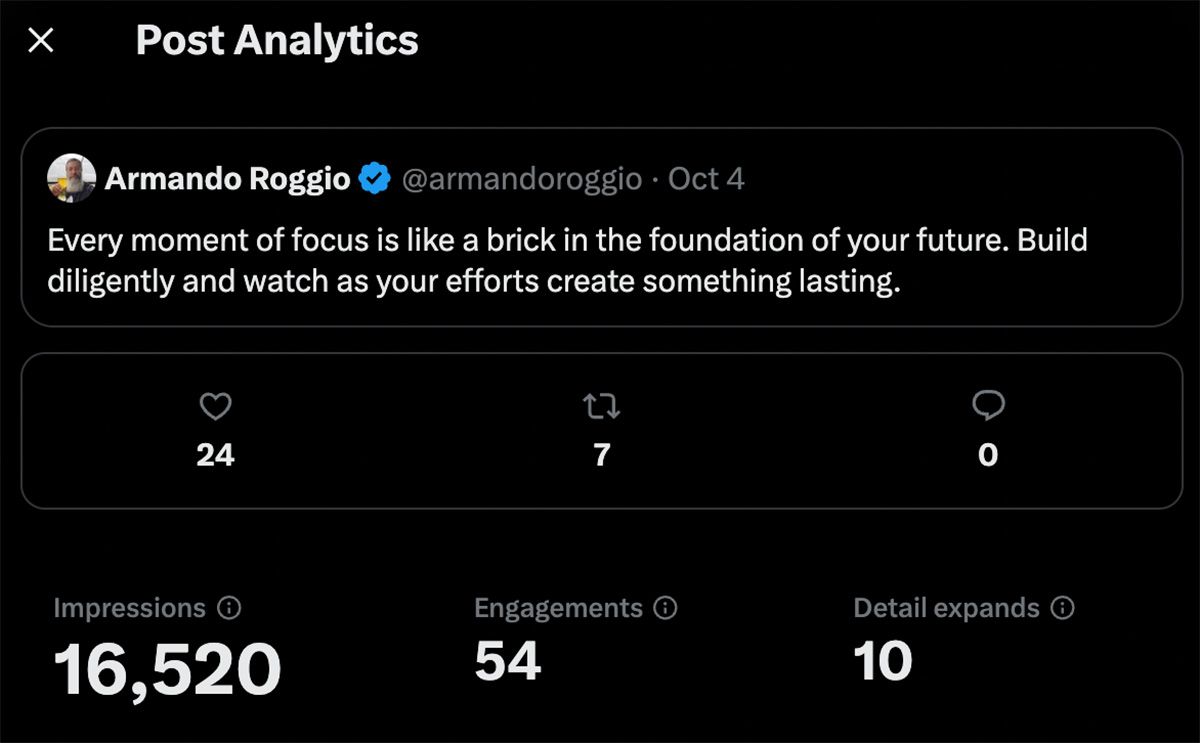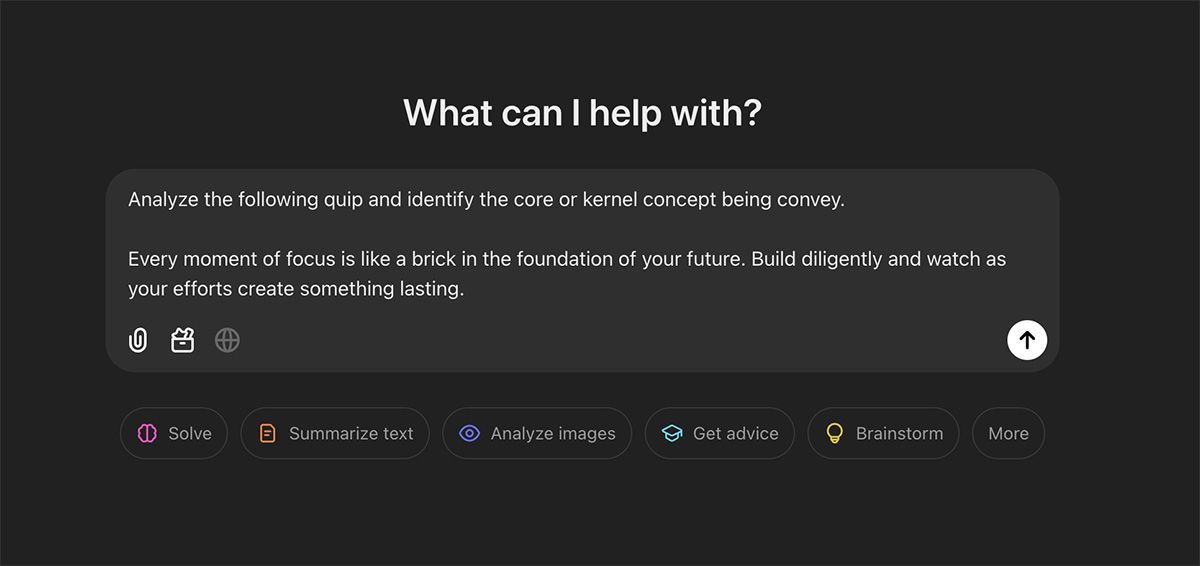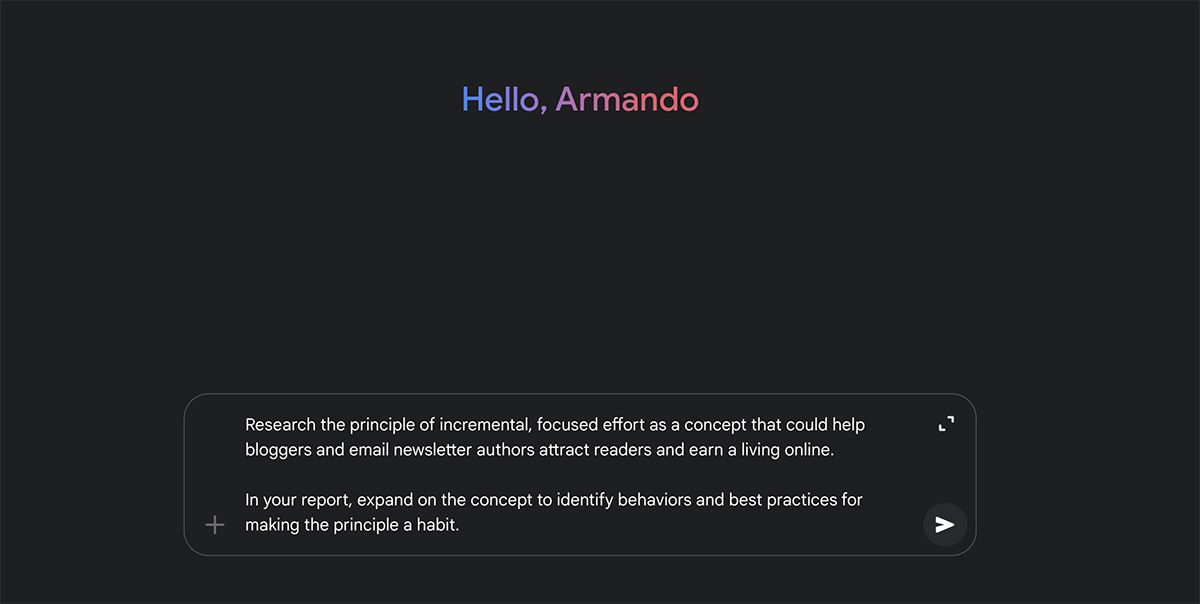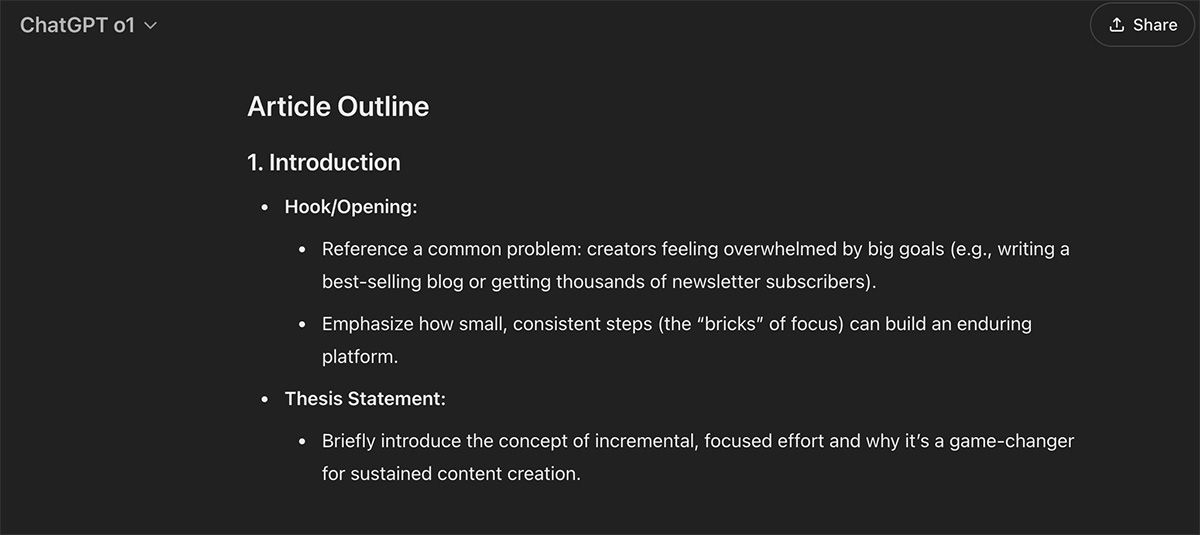Quip to Article Framework for Blogs and Newsletters
Start with a single concept and expand it into an article with the quip-to-article AI framework.

Sometimes professional writing is more like manufacturing a product than it is creating some object of fine art.
To be certain, writing is a creative act, but the point here is that when you work as a professional blogger or newsletter author, it can be very helpful to have a process or framework.
In this article, I want to share a "quip to article" framework that I have been developing using a combination of artificial intelligence (AI) tools and my own writing and research.
Quip to Article Content Framework
As 2024 was coming to a close, I was reviewing stats from my blogs, ecommerce sites, and social media channels when I found a gem. An X post from October 4, 2024, had generated more than 16,500 views. That is big for me.

The post was a quip —a witty remark— about focus and building for the future.
I wanted to capitalize on this post and squeeze more juice (exposure) from it. I wondered if I could start with a small idea (quip) and use AI to build it into an entire article in a few steps.
Every moment of focus is like a brick in the foundation of your future. Build diligently and watch as your efforts create something lasting.
— Armando Roggio (@armandoroggio) October 4, 2024
Step One - Have a Quip
The framework starts with a short, one or two sentence quip or quote. As I was testing it, I used quotations from Samual Johnson, Sun Tzu, and others.
For the example in this article, I will use the aforementioned X post.
Every moment of focus is like a brick in the foundation of your future. Build diligently and watch as your efforts create something lasting.
Step Two - Extract the Concept
Next, I use either Google's Gemini 1.5 Pro with Deep Research or Open AI's ChatGPT o1 model to find the kernel of truth, if you will, in the quip.

In this particular case, ChatGPT returned the following.
"At its core, this quip highlights the principle of incremental, focused effort —the idea that small, consistent investments of attention accumulate into a solid foundation for future success. By comparing moments of focus to bricks, it underscores that building something enduring happens one step at a time, and that diligent, deliberate work ultimately creates lasting results."
I might also iterate, asking the AI model to be more specific or try again, but, in this case, I thought ChatGPT did a nice job.
Step Three - Expand the Concept
Once I have identified the quip's core, like "the principle of incremental, focused effort," I ask both ChatGPT and Gemini to research the concept. In my prompt, I add information about my target audience.

In this way, I can compare the output from each AI model.
In this instance, Gemini produced a 1,946-word report, and ChatGPT used 661 words to flesh out the concept.
Once again, this is an opportunity to iterate with the AI, asking it for changes or corrections.
Step Four - Generate the Outline
At this point, I have the AI generate an article outline based on the research it completed, the research from the other AI model, and my input.

Step Five - Write the Article
Using the outline as a guide, I write. I don't let the AI do this part for any articles that will carry my byline, but I do let the generative AI give it a try when the article is published without a byline or on one of my AI-generated sites.
For example, I am using AI for the Ecommerce Shelf Life project, and in some upcoming newsletters, some articles were generated using this quip-to-article framework.